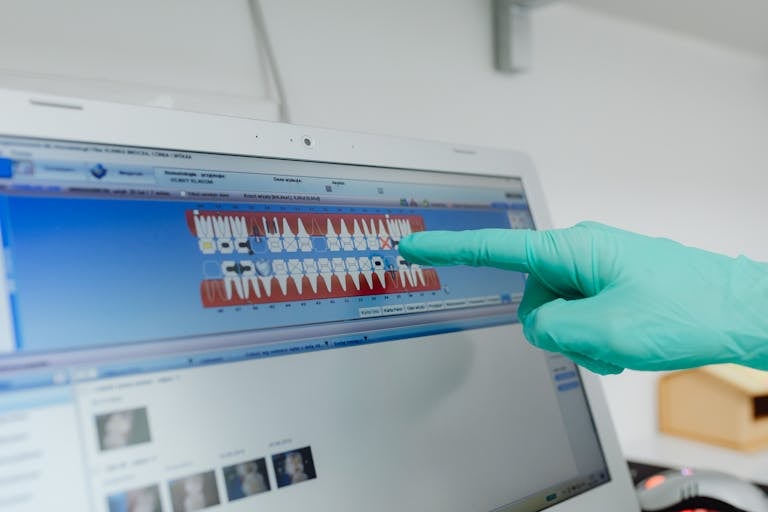The FlexTeam Method™: Revolutionizing Dental Practice Management Through Dynamic Team Training
The traditional dental office operates much like a factory assembly line. The receptionist answers phones, the insurance coordinator handles claims, and the office manager oversees operations. Each person stays in their lane, masters their specific role, and rarely ventures beyond their designated responsibilities. While this model has served the industry for decades, it’s increasingly proving to be a liability in today’s fast-paced healthcare environment.
A growing number of forward-thinking dental practices are abandoning this rigid structure in favor of something revolutionary: the FlexTeam Method™. This innovative approach combines full-spectrum team training with rotating responsibilities, fundamentally reshaping how dental offices operate and creating more resilient, efficient, and engaged teams.

The Problem with Traditional Role Segregation
The conventional dental office model creates several critical vulnerabilities. When the insurance coordinator calls in sick, insurance claims pile up and patient questions go unanswered. If the receptionist takes vacation, appointment scheduling becomes chaotic. These single points of failure create bottlenecks that can paralyze entire practices.
Beyond operational risks, rigid role assignments often lead to professional stagnation. Team members become experts in narrow functions but lose sight of the bigger picture. They develop tunnel vision, focusing solely on their tasks without understanding how their work impacts the patient experience or overall practice success. This isolation breeds disengagement and, ultimately, burnout.
The FlexTeam Method™ Solution
The FlexTeam Method™ flips this paradigm entirely. Instead of confining team members to single roles, every front-office employee is trained across all major functions: reception, scheduling, insurance coordination, billing, patient communication, and office management duties. But the innovation doesn’t stop at cross-training—responsibilities rotate weekly, ensuring that skills remain sharp and knowledge stays current across all areas.
This rotation system creates a dynamic work environment where Monday might find Sarah handling insurance calls, while by Friday she’s managing the front desk and coordinating with vendors. The following week, she might focus on patient billing and appointment confirmations. This constant variation keeps work engaging while building comprehensive expertise throughout the team.
Building Operational Resilience
The most immediate benefit of this approach is operational resilience. When every team member can handle every function, the practice becomes virtually immune to staffing disruptions. Sick days, vacations, and unexpected departures no longer create operational crises. The practice maintains full functionality regardless of who’s present on any given day.
This resilience extends beyond just covering absences. During busy periods, team members can fluidly shift to wherever help is needed most. If appointment scheduling becomes overwhelming, additional trained hands can immediately jump in. If insurance claims pile up, multiple team members can tackle the backlog simultaneously.
Eliminating Bottlenecks and Burnout
Traditional role segregation creates natural bottlenecks where work accumulates around specific individuals. The full-spectrum model distributes workload more evenly and allows for real-time load balancing. When one area becomes overwhelmed, resources can be instantly redirected to address the surge.
The rotation system also provides a built-in solution to burnout. Instead of performing the same tasks day after day, team members experience constant variety. They develop new skills, face fresh challenges, and maintain higher levels of engagement. The Monday morning dread that often accompanies repetitive work is replaced by curiosity about the week’s new responsibilities.
Fostering Shared Ownership
Perhaps the most transformative aspect of this model is how it creates shared ownership of practice success. When team members understand every function intimately, they develop a holistic view of practice operations. They see how their work in one area affects outcomes in another. This systems thinking leads to better decision-making and more proactive problem-solving.
Team members become invested in overall practice performance rather than just their individual metrics. They understand that patient satisfaction depends on seamless coordination across all touchpoints, and they take personal responsibility for ensuring that coordination happens.
Enhanced Patient Experience
Patients benefit enormously from this model. Instead of being shuffled between different specialists for different needs, they can often have multiple issues addressed by a single, comprehensively trained team member. This creates smoother interactions and reduces patient frustration.
The cross-training also ensures consistent service quality. Patients don’t experience dramatic differences in competence or helpfulness depending on which team member they encounter. Every interaction maintains the same high standard because every team member possesses the same comprehensive skill set.
Implementation: Adopting the FlexTeam Method™
Transitioning to the FlexTeam Method™ requires significant upfront investment in training and systems development. Practices must develop comprehensive training programs that cover all front-office functions in depth. They need to create detailed protocols and documentation to ensure consistency across rotating responsibilities.
The rotation schedule itself requires careful planning. Practices must balance continuity with variety, ensuring that critical relationships and ongoing projects aren’t disrupted by frequent role changes. Many successful practices find that weekly rotations provide the right balance, offering enough variety to maintain engagement while providing sufficient time to dive deep into each role.
Change management is crucial during the transition. Some team members may resist leaving their comfort zones or fear that their specialized expertise will be devalued. Clear communication about the benefits and strong leadership support are essential for overcoming this resistance.
The FlexTeam Method™ Advantage
Practices implementing the FlexTeam Method™ report measurable improvements across multiple metrics. Patient satisfaction scores increase due to more consistent, comprehensive service. Staff turnover decreases as engagement and job satisfaction improve. Operational efficiency gains are reflected in reduced wait times, faster problem resolution, and improved appointment availability.
Perhaps most importantly, these practices develop a competitive advantage through their enhanced agility and resilience. They can adapt more quickly to changing circumstances, whether that’s implementing new technologies, adjusting to regulatory changes, or responding to unexpected challenges.
The Future of Dental Practice Management
The FlexTeam Method™ represents more than just an operational improvement—it’s a fundamental reimagining of what a dental team can be. Instead of a collection of specialists working in isolation, it creates a unified, adaptable organism capable of responding fluidly to whatever challenges arise.
As healthcare continues to evolve at an accelerating pace, practices that embrace the FlexTeam Method™ will find themselves better positioned to thrive. They’ll attract and retain higher-quality team members, deliver superior patient experiences, and build more sustainable, profitable operations.
The question isn’t whether this model will become more widespread—it’s whether traditional practices will adapt quickly enough to remain competitive. In an industry where patient expectations continue to rise and operational complexity keeps increasing, the practices that embrace the FlexTeam Method™ may be the only ones that survive and thrive in the years ahead.
The dental office of the future won’t be defined by rigid hierarchies and narrow specializations. It will be characterized by flexibility, shared expertise, and collective ownership of success. The practices implementing the FlexTeam Method™ today are building tomorrow’s standard of care.








